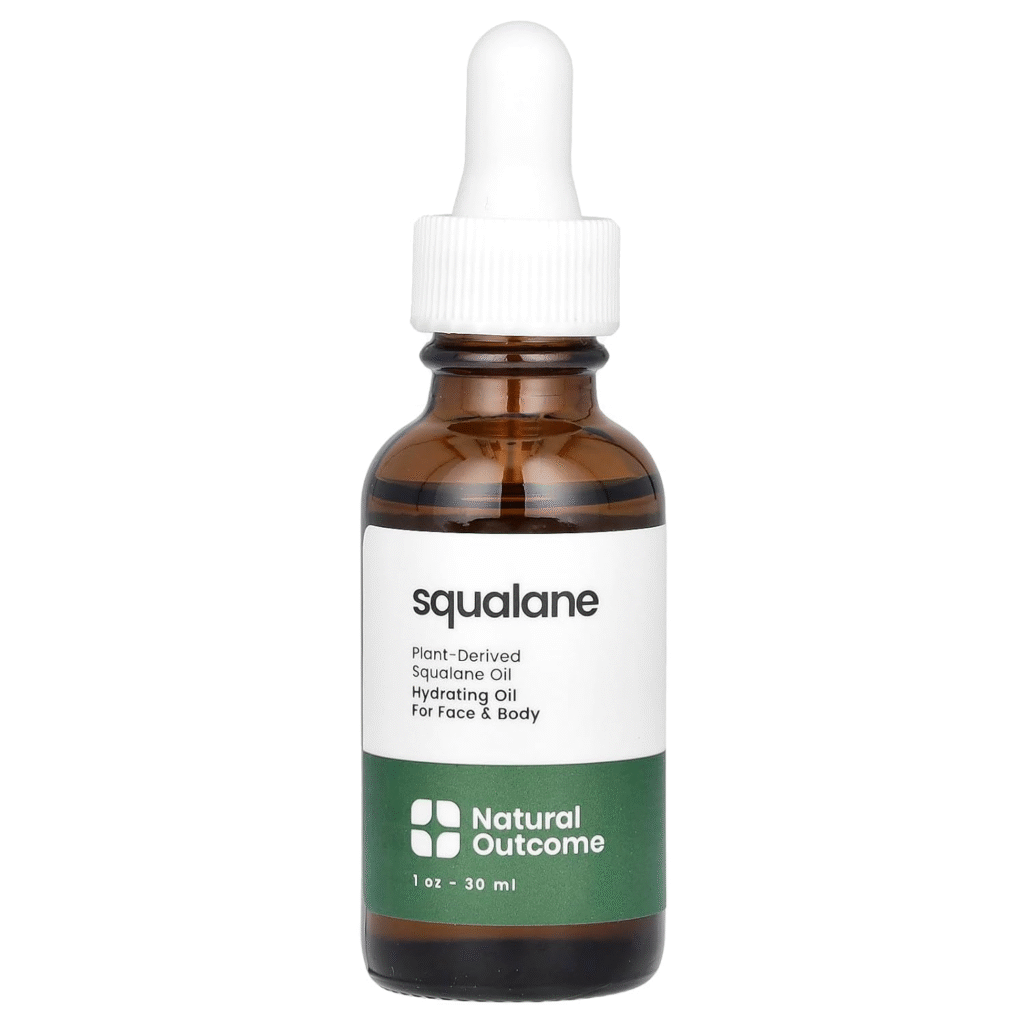The Menopausal Skin Dilemma
Menopause brings about significant changes to our skin. The hormonal fluctuations during this time can lead to dryness, sensitivity, and even unexpected breakouts. As estrogen levels decline, our skin loses some of its natural elasticity and firmness.
These changes can leave us feeling frustrated and searching for solutions.
Facial oils have emerged as a powerful tool to address many of the skin concerns we face during menopause. These concentrated elixirs are packed with nourishing ingredients that can help restore balance to our changing skin.
Understanding the Magic of Facial Oils
The Science Behind Facial Oils
Facial oils mimic the natural sebum our skin produces. As we age, and especially during menopause, our sebum production decreases, leading to dryness and a compromised skin barrier.
Applying facial oils replenishes what our skin lacks and supports its natural functions.
These oils are rich in essential fatty acids, vitamins, and antioxidants that nourish and protect the skin. They can penetrate deeply into the skin, providing hydration and nutrients where they’re needed most.
Choosing the Right Facial Oil
Finding the right facial oil for your menopausal skin can make a significant difference in your skincare routine. Oils rich in antioxidants and essential fatty acids are particularly useful for mature skin.
Some excellent options include:
- Rosehip oil: This oil is packed with vitamin C and retinol-like compounds.
It’s excellent for promoting collagen production and reducing fine lines.
Rosehip oil also contains high levels of linoleic acid, which can help improve skin texture and tone.
Try this product from Amazon: Eden’s Semilla 100% Pure Rosehip Oil

- Jojoba oil: Similar in composition to our skin’s natural sebum, jojoba oil is fantastic for balancing oil production and soothing sensitivity.
It’s non-comedogenic, meaning it won’t clog pores, making it suitable for all skin types, including those prone to acne.
Try this product from Amazon: Cliganic Organic Jojoba Oil

- Argan oil: High in vitamin E, argan oil provides intense hydration without clogging pores.
It’s also rich in fatty acids and antioxidants, which can help protect the skin from environmental damage and premature aging.
Try this product from Amazon: VoilaVe Moroccan Argan Oil

- Marula oil: This oil is high in oleic acid, which helps to lock in moisture.
It’s also rich in antioxidants and has anti-inflammatory properties, making it excellent for soothing irritated skin.
Try this product from Amazon: HBNO Organic Marula Oil

- Squalane oil: Derived from olives, squalane is very similar to our skin’s natural oils.
It’s lightweight, non-greasy, and easily absorbed, making it an excellent choice for those new to facial oils.
Try this product from Amazon: Natural Outcome Pure Squalane Oil

The Multifaceted Benefits of Facial Oils for Menopausal Skin
Intense Hydration Without the Heaviness
One of the most significant benefits of facial oils is their ability to provide deep hydration without feeling heavy or greasy. Unlike some thick creams that can sit on the skin’s surface, oils penetrate deeply, nourishing from within. This is particularly useful for menopausal skin, which often craves moisture but can be sensitive to heavy products.
The molecular structure of facial oils allows them to pass through the lipid layer of the skin quickly. This means they can deliver nutrients and hydration to the deeper layers of the skin, where they’re most needed. The result is skin that feels hydrated and nourished, without any greasy residue.
Boosting Skin Elasticity and Firmness
As estrogen levels decline during menopause, our skin loses some of its natural elasticity and firmness. Facial oils rich in omega-3 and omega-6 fatty acids can help combat this by supporting the skin’s lipid barrier and promoting collagen production.
For example, rosehip oil contains high levels of vitamin C, which is essential for collagen synthesis. Argan oil is rich in vitamin E, which can help improve skin elasticity.
Regular use of these oils can lead to a noticeable improvement in the plumpness and bounce of the skin.
Calming Inflammation and Redness
Menopausal skin can be prone to inflammation and redness, often because of hormonal fluctuations and increased sensitivity. Many facial oils have natural anti-inflammatory properties that can help soothe these issues.
Oils like chamomile and blue tansy are particularly effective for calming skin during flare-ups. Chamomile oil contains azulene, a compound known for its anti-inflammatory and skin-soothing properties.
Blue tansy oil contains chamazulene, which has similar anti-inflammatory effects.
Balancing Oil Production
Using facial oils can actually help balance oil production in the skin. During menopause, some women experience increased oiliness or even adult acne. By providing the skin with healthy oils, we can help regulate sebum production and potentially reduce breakouts.
This might seem counterintuitive, but when the skin is stripped of its natural oils (which can happen with harsh cleansers or as a result of hormonal changes), it can go into overdrive, producing even more oil to compensate. By using facial oils, we’re signaling to our skin that it doesn’t need to produce as much oil, helping to balance overall oil production.
Antioxidant Protection
Many facial oils are rich in antioxidants, which can help protect the skin from free radical damage. Free radicals are unstable molecules that can damage skin cells, leading to premature aging.
Antioxidants neutralize these free radicals, helping to prevent and even reverse some signs of aging.
For example, argan oil is rich in vitamin E, a powerful antioxidant. Rosehip oil contains high levels of vitamins A and C, both of which have antioxidant properties.
By incorporating these oils into your skincare routine, you’re providing your skin with an extra layer of protection against environmental stressors.
Incorporating Facial Oils into Your Menopausal Skincare Routine
The Art of Application
The way you apply facial oils can make a big difference in their effectiveness. The best method is to warm a few drops of oil between your palms and then gently press it into slightly damp skin. This helps the oil absorb more effectively and prevents it from sitting on the surface.
Start with clean, toned skin. After applying any water-based serums, take 3-5 drops of your chosen facial oil and warm it between your palms. Gently press the oil into your skin, starting from the center of your face and working outwards.
Pay extra attention to any dry or sensitive areas.
Layering Like a Pro
Facial oils can be used alone or as part of a more comprehensive skincare routine. For best results, apply your facial oil after your serums but before your moisturizer.
This allows the oil to penetrate deeply while the moisturizer seals everything in.
On days when your skin feels particularly dry, try mixing a drop or two of oil into your moisturizer for an extra hydration boost. This can be especially useful during winter months or in dry climates.
Nighttime Nourishment
While facial oils can be used morning and night, they’re particularly useful as part of an evening routine. Our skin does most of its repair work while we sleep, so applying a nourishing oil before bed can enhance this natural process.
Choose a facial oil with calming properties for your nighttime routine. Lavender oil, for example, soothes the skin but can also promote relaxation and better sleep.
Massage the oil into your skin using gentle, upward strokes.
This helps the oil absorb but can also help relax facial muscles and reduce tension.
Facial Massage Techniques
Incorporating a facial massage into your oil application routine can enhance the benefits of the oil and provide extra skin-boosting effects. Here are a few simple techniques to try:
- Lymphatic drainage: Use gentle, sweeping motions from the center of your face outwards and down your neck.
This can help reduce puffiness and promote circulation.
- Pressure point massage: Gently press and hold key pressure points on your face, such as the temples, between the eyebrows, and along the jawline.
This can help relieve tension and promote relaxation.
- Gua sha: Use a gua sha tool to gently scrape the skin in upward and outward motions.
This can help improve circulation, reduce puffiness, and promote lymphatic drainage.
Remember to always use gentle pressure and stop if you experience any discomfort.
Beyond Skincare: The Holistic Benefits of Facial Oils
Stress Relief and Self-Care
The benefits of facial oils extend beyond just skincare. The act of massaging oil into your face can be a form of self-care and stress relief, which is especially important during the often tumultuous menopausal years.
Taking a few extra minutes each evening to massage your facial oil, focusing on areas of tension like your jawline and temples, can become a cherished part of your self-care routine. This mindful practice can help you unwind from the day and prepare for restful sleep.
Aromatherapy Advantages
Many facial oils contain natural essential oils that offer aromatherapy benefits. Lavender can promote relaxation, while citrus oils can boost mood and energy.
This sensory experience can be a wonderful way to start or end your day, helping to balance not just your skin but your overall well-being.
For example, geranium oil is known for its balancing effects on both skin and emotions, making it an excellent choice for menopausal women. Rose oil can help reduce stress and promote feelings of well-being.
Experiment with different scents to find what works best for you.
Potential Challenges and How to Overcome Them
Adjusting to Oils
If you’re new to facial oils, there might be an adjustment period as your skin adapts. Start by using a small amount every other night and gradually increase frequency as your skin becomes accustomed to the oil.
If you have oily or combination skin, you might be hesitant to use facial oils. However, even oily skin can benefit from the right oils.
Start with lighter oils like jojoba or squalane, which are less likely to clog pores.
Avoiding Comedogenic Oils
For those prone to breakouts, it’s important to choose non-comedogenic oils that won’t clog pores. Oils like grapeseed, rosehip, and squalane are generally safe for acne-prone skin.
Be cautious with heavier oils like coconut oil or avocado oil, which can be comedogenic for some people. Always patch test a new oil on a small area of skin before applying it to your entire face.
Sun Sensitivity
Some facial oils can increase sun sensitivity, so it’s crucial to always follow up with a broad-spectrum sunscreen during the day. This is especially important for menopausal skin, which is more susceptible to sun damage.
Oils high in citrus essential oils or retinol-like compounds (such as rosehip oil) can make your skin more sensitive to UV rays. If you’re using these oils, it’s best to apply them at night or confirm you’re using adequate sun protection during the day.
The Future of Facial Oils in Menopausal Skincare
As more research is conducted on the specific needs of menopausal skin, we’re likely to see an increase in facial oils formulated specifically for this life stage. Keep an eye out for blends that incorporate phytoestrogens or adaptogens, which may offer extra benefits for hormonal skin.
Phytoestrogens are plant-based compounds that can mimic some of the effects of estrogen in the body. They may help reduce some of the skin changes associated with declining estrogen levels during menopause.
Soy-based oils, for example, are rich in phytoestrogens.
Adaptogens are herbs that help the body adapt to stress. In skincare, they can help balance and calm the skin. Look for oils infused with adaptogenic herbs like ashwagandha or holy basil.
Embracing the Oil Revolution
Incorporating facial oils into a menopausal skincare routine can be transformative. Not only can it address many skin concerns, but it can also become a cherished part of a self-care ritual.
Remember that every woman’s menopausal journey is unique, and what works for one person may not work for all. Listen to your skin, be patient, and don’t be afraid to experiment until you find the perfect oil or blend for you.
With their nourishing properties and luxurious feel, facial oils might just become your new skincare staple. Here’s to radiant, healthy skin at every stage of life!
People Also Asked
What are the best facial oils for menopausal skin?
The best facial oils for menopausal skin include rosehip oil, jojoba oil, argan oil, and marula oil. These oils are rich in antioxidants and essential fatty acids that can help hydrate, nourish, and protect aging skin.
Can facial oils help with menopausal acne?
Yes, certain facial oils can help with menopausal acne. Oils like jojoba and grapeseed are non-comedogenic and can help balance oil production, potentially reducing breakouts.
How often should I use facial oil during menopause?
The frequency of facial oil use during menopause depends on your skin type and needs. Generally, using facial oil once or twice daily, either alone or mixed with moisturizer, can be beneficial.
Are essential oils safe for menopausal skin?
While many essential oils can be useful for menopausal skin, they should be used with caution. Always dilute essential oils with a carrier oil and patch test before applying to your face.
Can facial oils replace moisturizer for menopausal skin?
Facial oils can be very hydrating, but they may not replace moisturizer entirely for all skin types. Many people find the best results by using both oil and moisturizer, with the oil applied first.
Do facial oils help with menopausal hot flashes?
While facial oils primarily benefit the skin, some with cooling properties (like peppermint or eucalyptus) might provide temporary relief during hot flashes when applied to pulse points.
Can facial oils reduce wrinkles caused by menopause?
Certain facial oils, particularly those rich in antioxidants and vitamin A (like rosehip oil), may help reduce the appearance of wrinkles by promoting collagen production and skin cell turnover.
Is it normal for menopausal skin to become more sensitive to products?
Yes, increased skin sensitivity is common during menopause because of hormonal changes. Facial oils can be a gentle choice to harsher skincare products for sensitive menopausal skin.
How long does it take to see results from using facial oils during menopause?
Results can vary, but many people notice improved hydration immediately. For more significant changes like improved texture or reduced fine lines, it may take 4-6 weeks of consistent use.
Can facial oils help with menopausal pigmentation issues?
Some facial oils, particularly those high in vitamin C (like rosehip oil), may help reduce hyperpigmentation and even out skin tone in menopausal skin.
Key Takeaways
- Facial oils can provide deep hydration and nourishment for menopausal skin without feeling heavy or greasy.
- Oils rich in antioxidants and essential fatty acids, like rosehip, jojoba, and argan oil, are particularly useful for mature skin.
- Regular use of facial oils can help improve skin elasticity, reduce inflammation, and balance oil production.
- Incorporating facial oils into your skincare routine can also provide stress relief and aromatherapy benefits.
- Start with a small amount of oil and gradually increase usage as your skin adjusts.
Disclaimer
The information contained in this post is for general information purposes only. The information is provided by Unlocking the Importance of Facial Oils for Menopausal Skin and while we endeavor to keep the information up to date and correct, we make no representations or warranties of any kind, express or implied, about the completeness, accuracy, reliability, suitability or availability with respect to the website or the information, products, services, or related graphics contained on the post for any purpose.


